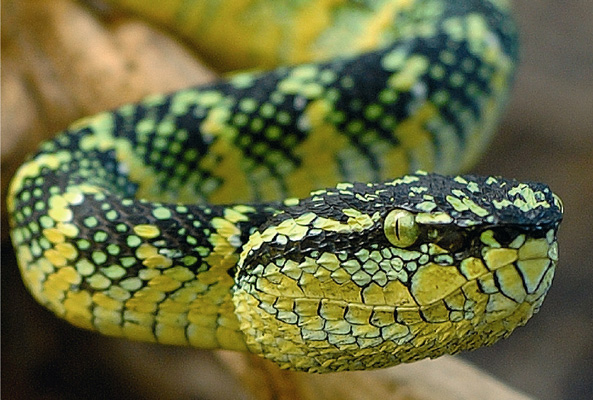Venomous vipers shape lizards’ tail-shedding abilities
 Washington, March 26 : In a new research, scientists have suggested that the lizards’ tail-shedding ability has been shaped mainly because of pressure from venomous vipers, which are the number one enemy of the wall-crawling reptiles.
Washington, March 26 : In a new research, scientists have suggested that the lizards’ tail-shedding ability has been shaped mainly because of pressure from venomous vipers, which are the number one enemy of the wall-crawling reptiles.
Tail-shedding, known to scientists as caudal autotomy, is a common anti-predator defense among lizards.
When attacked, many lizards jettison the wriggling appendage and flee. The predator often feasts on the tail while the lucky lizard scurries to safety. Later, the lizard simply grows a new tail.
The ease with which lizards shed their tails varies from species to species and from place to place.
For more than a century, biologists have suspected that this variation is controlled mainly by predator pressure: As the number of local lizard-eaters rises, so does the need for this effective defense mechanism.
When lizards live alongside lots of creatures eager to devour them, they''re more likely to evolve the ability to shed their tails easily, because this trait enables them to survive long enough to reproduce and pass their genes to the next generation.
Now, University of Michigan (U-M) vertebrate ecologist Johannes Foufopoulos, has conducted a study of 15 lizard species in Greece and the Aegean islands, to determine that lizards shed their tail the fastest when confronted by vipers.
“In the Aegean, vipers are specialized lizard predators,” said Foufopoulos. “So it makes sense, in retrospect, that the lizards’ primary defense would be aimed against their main enemy, the viper. But, no one had made this connection, until now,” he added.
According to Foufopoulos, this result is perhaps best explained by the peculiarities of viper attacks.
When non-venomous predators attack, tail-shedding is only useful in the relatively rare instances when the tail is firmly grasped by the predator.
But, when a viper bares its fangs and strikes, even glancing contact with the lizard’s tail can inject a lethal dose of venom.
In that case, the ability to shed a tail within seconds—before venom reaches the lizard’s vital organs—becomes a life-or-death matter.
“You lose your tail, but you come away with your life. And you can always grow another tail,” Foufopoulos said.
Though the study was conducted in the Mediterranean region, Foufopoulos said he suspects the results apply to other parts of the world—such as the American Southwest or Australia—where lizards coexist with venomous snakes. (ANI)